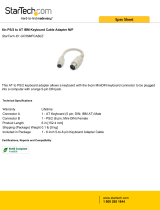
Contents
Safety notices .................................v
Finding parts, locations, and addresses ......................1
Part locations and location codes ............................2
8203-E4A, 9407-M15, 9408-M25 ............................2
Locations ..................................5
8204-E8A and 9409-M50 ..............................12
Locations ..................................15
8234-EMA, 9117-MMA, and 9406-MMA .........................23
Locations ..................................26
9119-FHA ...................................31
Locations ..................................34
9125-F2A ...................................42
Locations ..................................45
0595, 5095, and 7311-D20 ..............................56
Locations ..................................59
5094, 5294, 5096, and 5296 .............................63
Locations ..................................66
5786, 5787, 7031-D24, and 7031-T24 ..........................71
Locations ..................................74
5790 and 7311-D11 ................................78
Locations ..................................81
5791, 5794, 5797, and 5798 .............................83
Locations ..................................86
5796 and 7314-G30 ................................92
Locations ..................................95
5802 and 5877 .................................97
Locations ..................................99
5803 and 5873 .................................104
Locations ..................................107
5886 ....................................110
Locations ..................................113
Addresses ...................................114
8203-E4A, 9407-M15, and 9408-M25 addresses ......................114
8204-E8A and 9409-M50 addresses ..........................115
8234-EMA, 9117-MMA, and 9406-MMA addresses .....................116
0595, 5095, and 7311-D20 addresses ..........................117
5094, 5294, 5096, and 5296 addresses .........................120
5786, 5787, 7031-D24, and 7031-T24 addresses ......................126
5790 and 7311-D11 addresses ............................127
5796 and 7314-G30 addresses ............................128
5886 addresses .................................128
System parts ..................................129
8203-E4A, 9407-M15, and 9408-M25 system parts .....................129
8204-E8A and 9409-M50 system parts .........................137
8234-EMA, 9117-MMA, and 9406-MMA ........................147
9119-FHA system parts ..............................159
9125-F2A system parts ..............................175
0595, 5095, and 7311-D20 system parts .........................180
5094, 5294, 5096, and 5296 system parts ........................190
5786, 5787, 7031-D24, and 7031-T24 system parts .....................202
5790 and 7311-D11 system parts ...........................205
5791, 5794, 5797, and 5798 system parts ........................212
5796 and 7314-G30 system parts ...........................213
5802 and 5877 system parts.............................217
IBM Confidential
© Copyright IBM Corp. 2008, 2009 iii





















